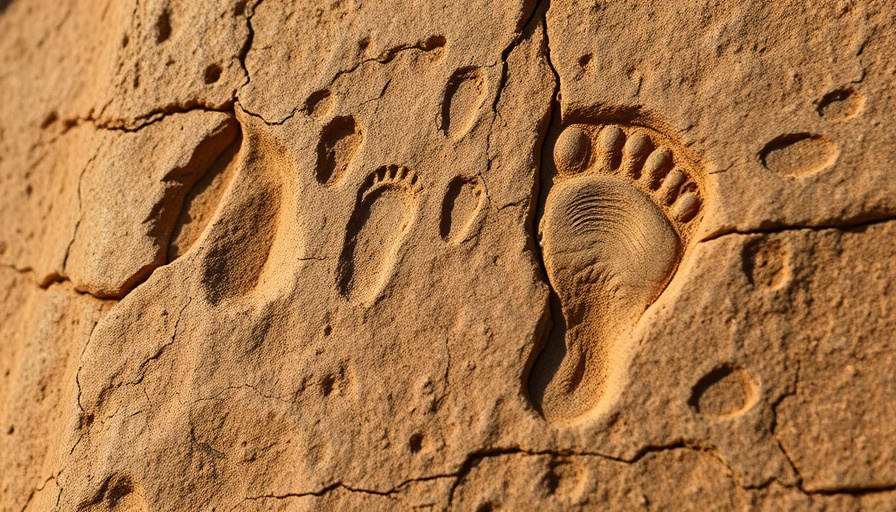
Ancient Footprints Challenge Accepted Historical Narratives
In the heart of New Mexico's White Sands National Park, discoveries are reshaping our understanding of human history in North America. A team of researchers unearthed footprints preserved in ancient lakebeds, showcasing human activity as far back as 23,000 years. This remarkable finding has sparked discussions among archaeologists and historians, challenging the long-held belief that humans arrived in the Americas only around 13,000 years ago.
The Significance of the New Findings
The timing of these footprints has profound implications for how we view early human cultures. Previously, the Clovis culture, named after the archaeological site near Clovis, New Mexico, was considered the earliest known group in the region, with evidence dated to approximately 13,000 years ago. However, the footprints found at White Sands suggest that human presence predates this by a substantial 10,000 years, hinting at a complex and diverse cultural landscape much earlier than we believed.
Radiocarbon Dating: A New Approach
The credibility of this timeline has been bolstered by modern dating techniques. While some critiques of the 2021 study questioned the reliability of seeds and pollen used for dating, the latest analysis uses radiocarbon-dated ancient mud, providing a firmer foundation for the original claims. This new study, published in the journal Science Advances, now marks the third type of material corroborating the timeline, reinforcing the validity of the findings.
The White Sands Site: A Treasure Trove of Evidence
Vance Holliday's exploration of the area has been instrumental in piecing together this story. Initially skeptical, he became intrigued by the potential of uncovering additional evidence of human habitation. The presence of ancient mud, along with the preserved footprints, has become critical in establishing a stronger timeline. The uniqueness of the White Sands landscape, characterized by its stunning gypsum dunes and rich geological history, adds to the significance of this site for future archaeological endeavors.
Broader Implications for Understanding Migration Patterns
This discovery also prompts us to reconsider how we understand human migration patterns. If humans were present in the Americas 23,000 years ago, this could indicate routes and migration methods that differ dramatically from the currently accepted theories. Future research will likely focus on understanding how these early inhabitants adapted to their environments and how they interacted with prehistoric flora and fauna.
Connecting the Past with Our Present
For those living in regions like Dallas, where interest in lifestyle and history intertwine, this story serves as a fascinating intersection of archaeology and contemporary culture. Understanding the deep roots of human history can enhance our appreciation for the places we inhabit today. It reminds us that the stories of our ancestors are woven into the fabric of our lives. Learning about these discoveries offers a connection to something greater—an invitation to explore the landscape of our history.
Final Thoughts
As our understanding of human history evolves, there's much to consider. The footprint discoveries at White Sands are not just about dates and timelines; they represent a pivotal shift in how we see ourselves within the broader narrative of human existence. The implications resonate beyond archaeology, impacting societal perspectives on our collective past and the diversity of experiences that have shaped North America.
The future of archaeological research at sites like White Sands holds promise for even more revelations. Therefore, engaging with this evolving narrative can enrich our understanding of history, culture, and identity. As we explore and question these new insights, we may find that the footprints of the past lead us toward a deeper appreciation of the present.
 Add Element
Add Element  Add Row
Add Row 



Write A Comment